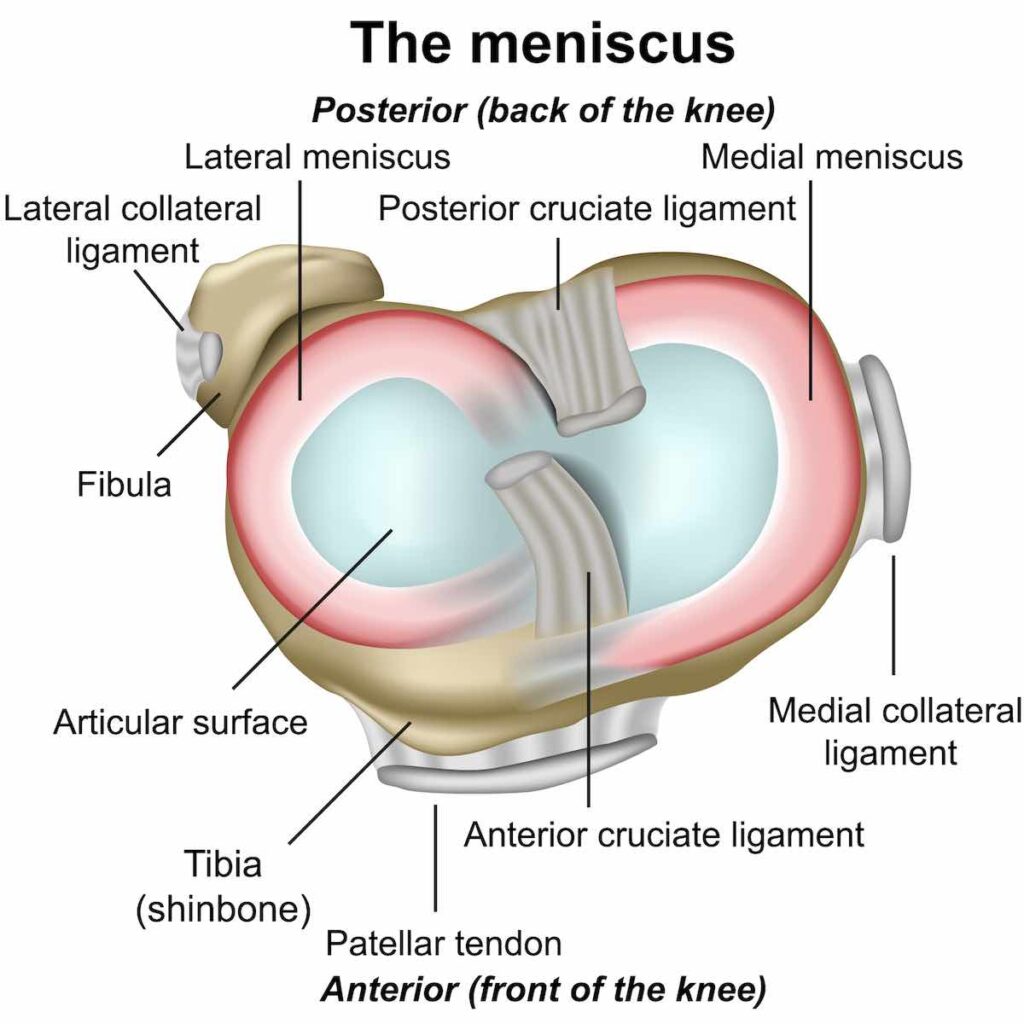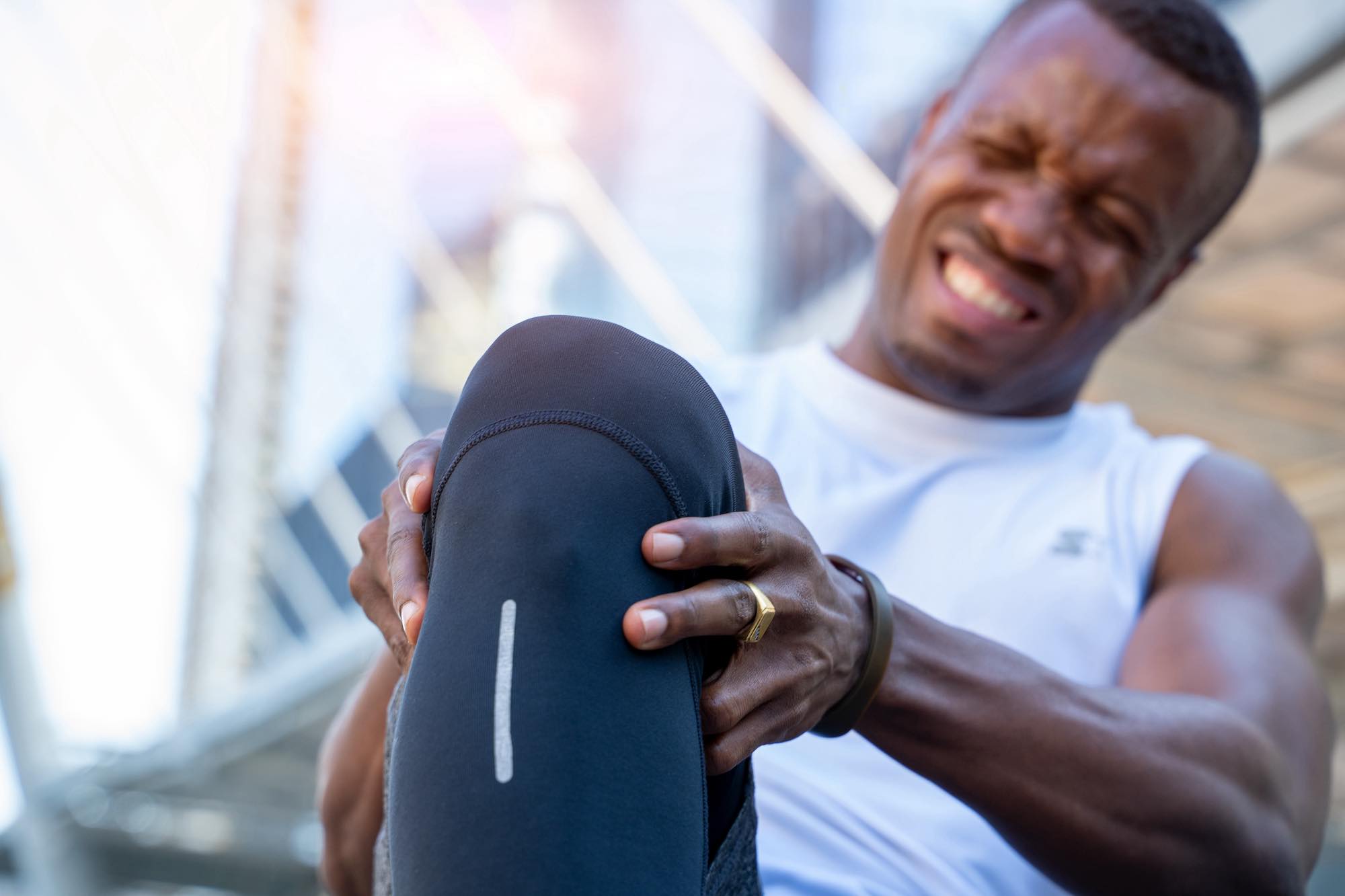What is a meniscus and what does it do?
The meniscus is a type of tissue (cartilage) that acts as a shock absorber and sits between the femur and tibia (knee joint). The main function of the meniscus is to take on part of the load transmitted from the upper limb to the lower limb during weight-bearing movements such as walking, running, stairs, squatting, and other activities.
In addition, the meniscus absorbs a proportion of the shock transmitted from the lower limb to the upper limb as well as provides stability to the knee joint.
Meniscus tears usually occur due to a twisting-type mechanism or during an impact injury.

Common causes of meniscus tears include:
- Sports injuries
- Twisting/torsion injury (i.e., the knee is bent and rotated in an awkward position causing a twisting force to be applied to the meniscus)
- Direct impact (what you experience if you trip over or kneel on your knee)
- A hereditary factor (some people are simply more likely to get a meniscus tear than others)
- Aging (because the meniscus becomes weaker over time, it is more susceptible to tears)
Treatment options for meniscus tears include:
Rest and supportive taping. This conservative approach can be used to ease the symptoms, allow the meniscus to heal, and prevent any further damage.
NSAIDs Medication. This can be used to reduce pain and inflammation.
Corticosteroid injection (injections given directly into the knee joint to reduce pain and inflammation). This is usually only recommended if the tear is small and the person affected is young.
Orthopedic PRP or Stem Cell Therapy. In certain cases, stem cell treatments can be used to actively treat damaged meniscus tissue.
Surgery. The meniscus can be repaired or partially removed through a minimally-invasive surgery (arthroscopy).
Recovery time following surgery for a meniscus tear
Recovery time after meniscus surgery is quick.
Most people are off their feet and require crutches for 2-3 days, full recovery takes 6-8 weeks, and full return to sports at 3 months or sooner.
How to prevent meniscus tears
While no specific exercises can prevent meniscus tears, strengthening the muscles around your knees will help to protect them.
If you do experience an injury or pain in your knees, talk with an orthopedic specialist about ways to improve your strength so you can reduce your risk of meniscus tears.
Another helpful strategy to try and reduce the risk of a meniscus tear is to maintain a healthy weight. Exercising regularly and maintaining a good diet with plenty of anti-inflammatory foods can help reduce the risk of meniscus tears.
When to see an orthopedic specialist for a suspected meniscus tear
- Pain when you are active, especially with repetitive movements such as running, pivoting on the knee, or kneeling.
- Weakness in the legs, loss of balance, and difficulty standing up from a seated position due to pain.
- Tenderness to touch near your knee joint or bump on the inside of your knee.
- A doctor has diagnosed you with a meniscus tear but surgery was not recommended and the symptoms continue to persist.
